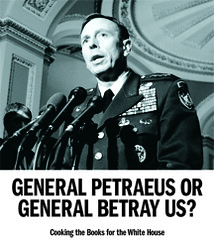On August 31, we announced the winners of an unofficial Expanded Universe Short Story Competition fan fiction contest to promote Jericho for the fans, expand its universe (outside of the town where it largely takes place on television), and demonstrate the possibilities of its rich story line. Today, we’re proud to present the work of Ray Hayton, also known as hrayton at Jericho Rally Point. We hope you enjoy this story that takes us back to the opening of the show. Congratulations to Ray Hayton!
Letters To The Lost
by Ray Hayton
Brian Weber was ten years old. He and his sister Tricia attended Olive Elementary School in Novato, California, a small town located a few miles north of San Francisco.
They were walking home from school on Sept. 19, just like they did every day. And then it happened.
A bright flash lit the horizon to the south of them; and Brian was just old enough to know what that meant. Tricia sobbed hysterically, more upset that she wet herself than what the implications of the bright light meant.
Brian already seemed to know that his mom and dad were never going to be coming home again. He felt the tears welling up, but didn't let them spill over. His little sister needed him.
Tricia was six. She was in first grade this year, and the two of them walked to school every day together. His mom always told him, "take care of your sister, Brian, and be careful today."
Brian took this responsibility seriously. So he grabbed Tricia’s hand began to run home, six long blocks from school. While Tricia went to her room to change, Brian started making some peanut butter sandwiches. They always made everything better.
The two of them always made it home from school about an hour and a half before his mother did. She worked in Sausalito, the town just north of the Golden Gate Bridge. His father owned a small software development company in San Francisco, and he always worked later.
Brian froze for a second, feeling dizzy and sick. Then, he slowly smoothed the peanut butter across the bread. Things will be fine. Just make some sandwiches. The power will come back on.
Outside, he could hear people shouting; a siren somewhere off in the distance.
When Tricia came down, Brian got her settled in at the kitchen table with a coloring book, a peanut butter sandwich, and a glass of milk from the fridge. And then he slipped outside to take another look at the monstrous cloud to the south.
His neighbor, Mr. Friedman, was running toward his house. Mr. Friedman's son, Josh, was a year older than Brian. He was kind of a jerk, but they did hang out occasionally.
"Mr. Friedman!" Brian shouted. "What's happening!?"
Brian hated the whine that he could hear in his own voice. It revealed how he felt. It said he was about to cry and couldn’t do anything about it.
"Brian! Are your parents home by any chance?"
Brian shook his head. Friedman muttered something under his breath for a moment, put his hands to his head, and looked up at Brian standing in the doorway.
"Okay," he said. "Brian, I want you and your sister to meet me at our house in ten minutes, okay? It's very important that you guys come over in a bit, all right? Pack a small bag … for a sleepover … but I have to go now."
As Mr. Friedman started jogging toward his home, Brian went back inside.
"Look, Brian!" Tricia said, as she held up the coloring book. "I finished the ponies!"
"Cool, Trish!" Brian responded, "They look great! Hey Trish, how would you feel about having a sleepover at the Friedmans’ tonight?"
Tricia thought about it for a second and then her whole face lit up. She knew Abby Friedman well enough. She babysat them occasionally. She was 15 and Tricia absolutely idolized her.
"Will Abby be there?"
Brian nodded, "I'm pretty sure, Trish."
She nodded.
Brian wolfed down his peanut butter sandwich, hurriedly packed a small bag, and then went in to help Tricia pack hers. He added some snacks and a couple cans of soda from the fridge to his backpack. And then he added some coloring books for Tricia.
Brian grabbed the yellow legal pad from the kitchen counter, and wrote a quick note out for his mom and dad.
Dear Mom and Dad,
Mr. Friedman asked us to spend the night. Tricia and I will be over there. Okay? Please don’t be mad. I love you. See you later.
— Brian and Trish
Brian taped the note to the front door and they started walking toward the Friedman home. The entire family was packing their old Bronco. Within minutes, they were gone.
All up and down Cherry Street, indeed, all over Novato and the San Francisco suburbs, notes on front doors rustled and flapped in the wind.
Letters to the lost.
Disclaimer: Jericho and its related characters are the property of CBS Paramount Television Network and Junction Entertainment. This contest is solely for entertainment purposes. Neither Ray Hayton, Richard Becker, nor Copywrite, Ink. is affiliated with CBS or Junction Entertainment.

Letters To The Lost
by Ray Hayton
Brian Weber was ten years old. He and his sister Tricia attended Olive Elementary School in Novato, California, a small town located a few miles north of San Francisco.
They were walking home from school on Sept. 19, just like they did every day. And then it happened.
A bright flash lit the horizon to the south of them; and Brian was just old enough to know what that meant. Tricia sobbed hysterically, more upset that she wet herself than what the implications of the bright light meant.
Brian already seemed to know that his mom and dad were never going to be coming home again. He felt the tears welling up, but didn't let them spill over. His little sister needed him.
Tricia was six. She was in first grade this year, and the two of them walked to school every day together. His mom always told him, "take care of your sister, Brian, and be careful today."
Brian took this responsibility seriously. So he grabbed Tricia’s hand began to run home, six long blocks from school. While Tricia went to her room to change, Brian started making some peanut butter sandwiches. They always made everything better.
The two of them always made it home from school about an hour and a half before his mother did. She worked in Sausalito, the town just north of the Golden Gate Bridge. His father owned a small software development company in San Francisco, and he always worked later.
Brian froze for a second, feeling dizzy and sick. Then, he slowly smoothed the peanut butter across the bread. Things will be fine. Just make some sandwiches. The power will come back on.
Outside, he could hear people shouting; a siren somewhere off in the distance.
When Tricia came down, Brian got her settled in at the kitchen table with a coloring book, a peanut butter sandwich, and a glass of milk from the fridge. And then he slipped outside to take another look at the monstrous cloud to the south.
His neighbor, Mr. Friedman, was running toward his house. Mr. Friedman's son, Josh, was a year older than Brian. He was kind of a jerk, but they did hang out occasionally.
"Mr. Friedman!" Brian shouted. "What's happening!?"
Brian hated the whine that he could hear in his own voice. It revealed how he felt. It said he was about to cry and couldn’t do anything about it.
"Brian! Are your parents home by any chance?"
Brian shook his head. Friedman muttered something under his breath for a moment, put his hands to his head, and looked up at Brian standing in the doorway.
"Okay," he said. "Brian, I want you and your sister to meet me at our house in ten minutes, okay? It's very important that you guys come over in a bit, all right? Pack a small bag … for a sleepover … but I have to go now."
As Mr. Friedman started jogging toward his home, Brian went back inside.
"Look, Brian!" Tricia said, as she held up the coloring book. "I finished the ponies!"
"Cool, Trish!" Brian responded, "They look great! Hey Trish, how would you feel about having a sleepover at the Friedmans’ tonight?"
Tricia thought about it for a second and then her whole face lit up. She knew Abby Friedman well enough. She babysat them occasionally. She was 15 and Tricia absolutely idolized her.
"Will Abby be there?"
Brian nodded, "I'm pretty sure, Trish."
She nodded.
Brian wolfed down his peanut butter sandwich, hurriedly packed a small bag, and then went in to help Tricia pack hers. He added some snacks and a couple cans of soda from the fridge to his backpack. And then he added some coloring books for Tricia.
Brian grabbed the yellow legal pad from the kitchen counter, and wrote a quick note out for his mom and dad.
Dear Mom and Dad,
Mr. Friedman asked us to spend the night. Tricia and I will be over there. Okay? Please don’t be mad. I love you. See you later.
— Brian and Trish
Brian taped the note to the front door and they started walking toward the Friedman home. The entire family was packing their old Bronco. Within minutes, they were gone.
All up and down Cherry Street, indeed, all over Novato and the San Francisco suburbs, notes on front doors rustled and flapped in the wind.
Letters to the lost.
Disclaimer: Jericho and its related characters are the property of CBS Paramount Television Network and Junction Entertainment. This contest is solely for entertainment purposes. Neither Ray Hayton, Richard Becker, nor Copywrite, Ink. is affiliated with CBS or Junction Entertainment.





















